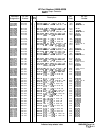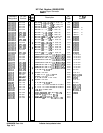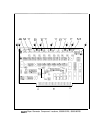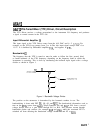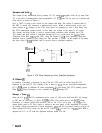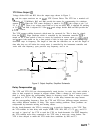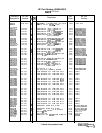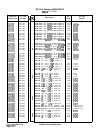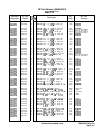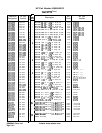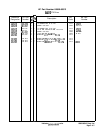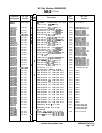
YTX Drive Output
@
Voltage divider R54 and R55 drive the output stage shown in Figure 3.
R,
and the output transistor are on A6A7 YTX Current Driver. The YTX has a nominal coil
sensitivity of 75 MHz/mA. R63 and R66 provide the means for compensating for variations
amount
YTXs.
When the YTX center frequency is tuned to 5.8 GHz, the voltage at pin 3 of
U3 is
+1.52
V. There is no voltage across R66 so it has no effect. R63 is adjusted for tracking
at 5.8 GHz and R66 is adjusted at 2 Ghz. U4A and voltage divider R68 and R69 provide the
t1.52
V source.
The YTX magnet exhibits hysteresis which must be corrected for. This is done by signals
from the
A6All
Slope Generator which is controlled by the instrument controller.
QlS
is
turned on for a short period of time to correct for hysteresis in narrow spans
(<l
GHz);
QlS
and
Q19
are both turned on for a short period of time in large spans and when making large
downward steps in frequency. The length of time that the transistors are on and the length of
time after they are off before the sweep starts is controlled by the instrument controller and
varies with start frequency, span, previous stop frequency, and so on.
+9v
+l
.52V
R63 R66
r
Rs
R61
a
*AA
,
,
SENSE
p/o
A6A7
R58
R54
-.
525V/GHz
+
-
::;
I
YTX
COIL
(ABAB)
-40v
Figure 3. Output Amplifier, Simplified Schematic
Delay Compensation
@I
The YTX and YTO (LO)
are electromagnetically tuned devices. As such, they both exhibit a
delay in their response to changes in magnet current. When a change in coil current occurs,
there is a delay before the corresponding change in frequency occurs. When a ramp of current
is applied to a YTX or YTO magnet coil, there is a time delay between the ramp current
and the corresponding frequency. Since the YTX and YTO have different magnet structures,
they exhibit different amounts of delay. This causes tracking problems. These problems are
compounded by harmonic mixing and heating effects.
On the fourth harmonic, the YTO is sweeping
l/4
as much in frequency as the YTX. Thus
the YTO exhibits its least delay with respect to the YTX. R24, R25, Cl, C2,
Cll,
and C23
are used to “speed up” the YTX to track the YTO on fourth harmonic. On lower harmonics,
the YTO exhibits more delay compared to the YTX since it must now sweep further. The
YTX is then delayed to match the YTO under these conditions by R26 and C3.
A6A12
3



